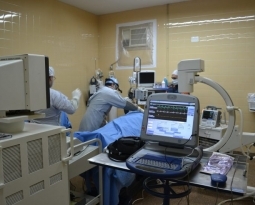Utah Patent of the Month – October 2023
Multi-tenant solutions have a single instance of the software and its supporting infrastructure serves multiple customers. With this model, many companies will have their data stored in a commonly-shared data center. This approach introduces the potential for customer data to be accessed by other customers in security breaches – whether purposeful or inadvertent. While cost-effective and space-efficient, this approach raises concerns about data segregation and the risk of data breaches. Secturion Systems, Inc. has been working to build the technology needed to secure data within multi-tenant environments.
Secturion’s method centers around the concept of Multi-Independent Level Secure (MILS) storage encryption. When data enters a storage system, it’s received by a computing device, which routes it to a specific cryptographic module. These modules are dedicated to various security classes. The data is then encrypted using the dedicated cryptographic module. Each data packet is tagged with essential metadata, including the security class and port of origin. The encrypted data packets are securely stored.
When the data needs to be retrieved, it is sent to a second data storage, from which a different computing device with cryptographic modules retrieves and decrypts it. To ensure robust security, Secturion’s method involves a dynamic key management system. Keys are selected based on the security class of the data, ensuring the highest level of protection.
The key advantages of Secturion Systems’ approach are:
- Data Isolation: Data from different sources remains isolated, preventing unauthorized access or accidental data leakage.
- Robust Security: MILS encryption ensures that data is securely protected at multiple levels.
- Dynamic Key Selection: Adaptive key management guarantees the right keys are used for encryption, enhancing data security.
Secturion Systems’ inventive solution addresses the pressing challenges of multi-tenancy data storage and sets a new standard for data security. With their cutting-edge approach to encryption and data isolation, they’re shaping the future of secure data management in shared environments.
Are you developing new technology for an existing application? Did you know your development work could be eligible for the R&D Tax Credit and you can receive up to 14% back on your expenses? Even if your development isn’t successful your work may still qualify for R&D credits (i.e. you don’t need to have a patent to qualify). To find out more, please contact a Swanson Reed R&D Specialist today or check out our free online eligibility test.
Who We Are:
Swanson Reed is one of the U.S.’ largest Specialist R&D tax advisory firms. We manage all facets of the R&D tax credit program, from claim preparation and audit compliance to claim disputes.
Swanson Reed regularly hosts free webinars and provides free IRS CE and CPE credits for CPAs. For more information please visit us at www.swansonreed.com/webinars or contact your usual Swanson Reed representative.

















